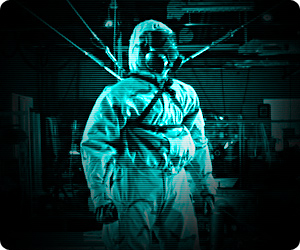By Tia Ghose
LiveScience
Are you prepared to meet your robot overlords?
The idea of superintelligent machines may sound like the plot of “The Terminator” or “The Matrix,” but many experts say the idea isn’t far-fetched. Some even think the singularity — the point at which artificial intelligence can match, and then overtake, human smarts — might happen in just 16 years.
But nearly every computer scientist will have a different prediction for when and how the singularity will happen.
Some believe in a Utopian future, in which humans can transcend their physical limitations with the aid of machines. But others think humans will eventually relinquish most of their abilities and gradually become absorbed into artificial intelligence (AI)-based organisms, much like the energy-making machinery in our own cells. [5 Reasons to Fear Robots]
Singularity near?
In his book “” (Viking, 2005), futurist Ray Kurzweil predicted that computers will be as smart as humans by 2029, and that by 2045, “computers will be billions of times more powerful than unaided human intelligence,” Kurzweil wrote in an email to LiveScience.
“My estimates have not changed, but the consensus view of AI scientists has been changing to be much closer to my view,” Kurzweil wrote.
Bill Hibbard, a computer scientist at the , doesn’t make quite as bold a prediction, but he’s nevertheless confident AI will have human-level intelligence some time in the 21st century.
“Even if my most pessimistic guess is true, it means it’s going to happen during the lifetime of people who are already born,” Hibbard said.
But other AI researchers are skeptical.
“I don’t see any sign that we’re close to a singularity,” said Ernest Davis, a computer scientist at .
While AI can trounce the best chess or Jeopardy player and do other specialized tasks, it’s still light-years behind the average 7-year-old in terms of common sense, vision, language and intuition about how the physical world works, Davis said.
For instance, because of that physical intuition, humans can watch a person overturn a cup of coffee and just know that the end result will be a puddle on the floor. A computer program, on the other hand, would have to do a laborious simulation and know the exact size of the cup, the height of the cup from the surface and various other parameters to understand the outcome, Davis said. [10 Cool Facts About Coffee]

Infinite abilities
Once the singularity occurs, people won’t necessarily die (they can simply upgrade with cybernetic parts), and they could do just about anything they wanted to — provided it were physically possible and didn’t require too much energy, Hibbard said. more




